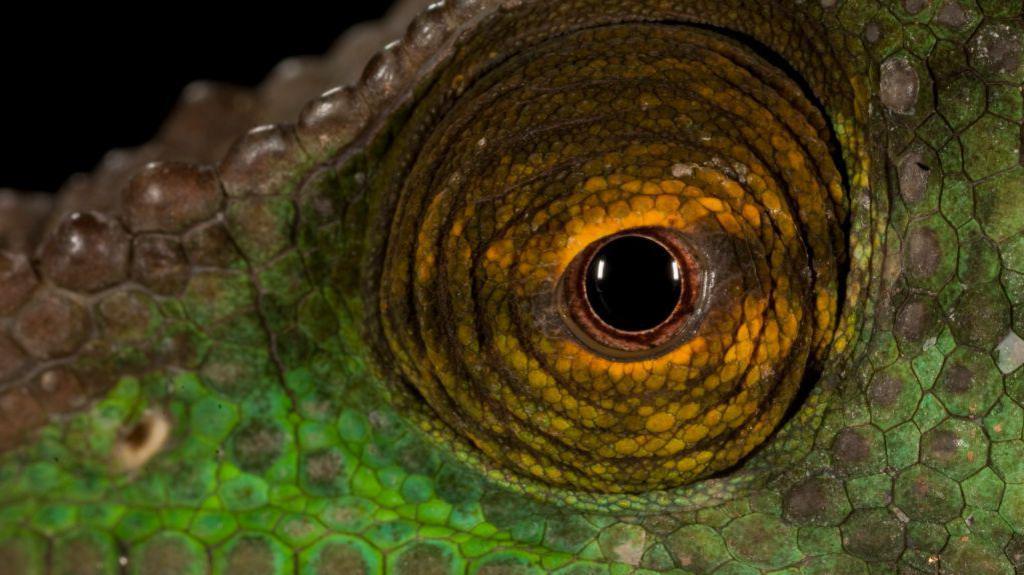Secret of chameleons' unusual eyes discovered using 3D imaging

- Published
Chameleons are famous for lots of reasons, they have cool colour-changing skin and super fast tongues.
But what has been most mysterious about the reptile is how their eyes can turn nearly 360-degrees and look in two different directions at once.
This once confused scientists but now 3D imaging scans have revealed the structures that allow their eyes to move this way.
It turns out that chameleons have long, coiled optic nerves behind their eyes.
Read on to find out what that means.
Check out this teeny baby panther chameleon
- Published28 November 2021
Small chameleons have fastest tongues. Video, 00:01:28
- Published6 January 2016
Scientists create robot chameleon that changes colour! Video, 00:00:30
- Published16 August 2021
'Security camera eyes'

Scientists have watched the unique darting eyes of chameleons for many years but they never fully understood how they worked.
Now, they have learnt that the reptile have curly optic nerves, which are not seen in other lizards.
Optic nerves are part of the body which sends signals to the brain from the eyes.
The researchers believe chameleons evolved to have the coiled optic nerve so they could increase their field of vision.
This longer coiled optic nerve gives enough slack so that there isn't any tension on the eyes when they move around so far.
It means that the chameleons can see almost all the way around which helps them hunt and stay safe from predators.
Associate Professor Juan Daza, who is the lead of this new research, says that chameleon eyes are "like security cameras, moving in all directions".
Why did it take so long to work out?

This painting of a chameleon was made in the 1700s
Chameleons have been researched for many years, including by Greek philosopher Aristotle and scientist Sir Isaac Newton, who were both intrigued by their unique eyes.
Previously, chameleons had to be cut up to look at how the inside of their bodies worked, a process called dissection.
But this sometimes damaged the insides and so the full story of how things were connected behind their eyes wasn't clear.
It is because of modern technology that this discovery was possible.
Scientists using xray and computers for a CT scan - were able to record detailed pictures of the inside of their bodies, including the unusually shaped optic nerves.
